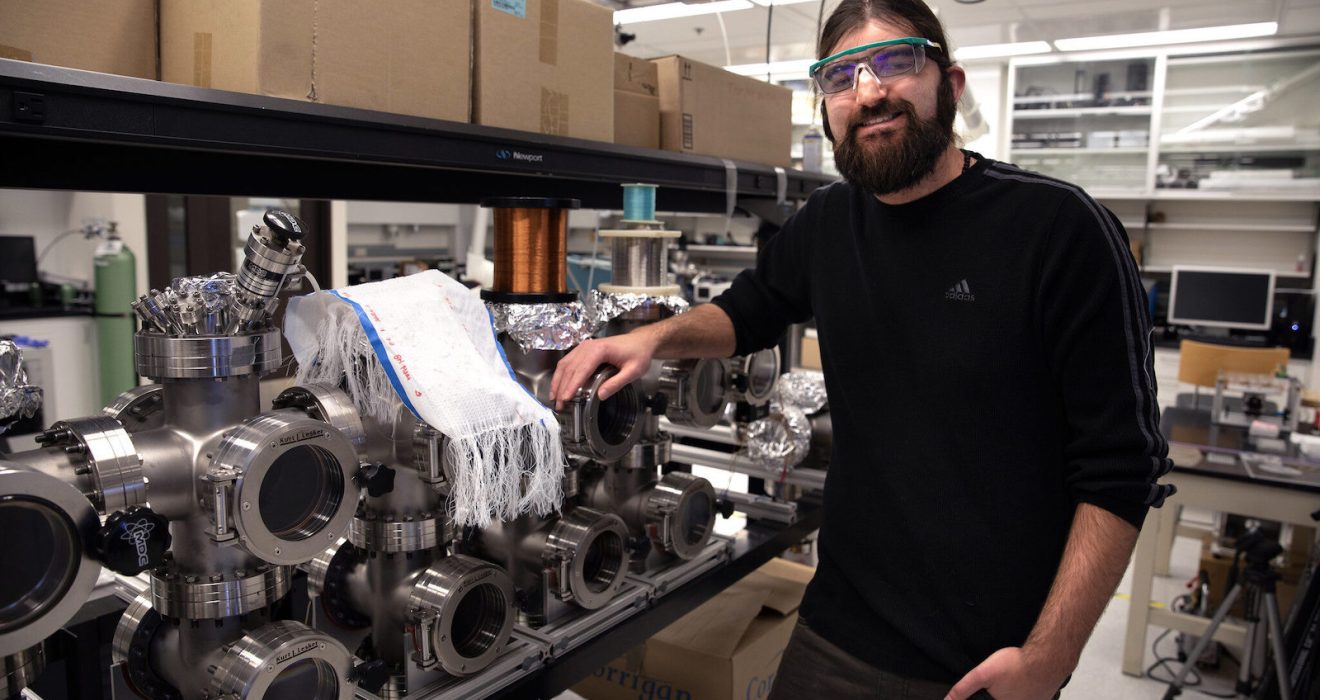In the ever-evolving landscape of the fashion industry, characterized by swift cycles and ephemeral trends, the alarming accumulation of clothing waste has reached unprecedented levels. A mere fraction, less than 15%, of textiles undergo recycling each year in the United States, resulting in a staggering 17 million tons finding their way into landfills. In response to this environmental crisis, a pioneering solution emerges from a team led by the University of Michigan: woven-in labels utilizing cost-effective photonic fibers. Resembling barcodes seamlessly integrated into fabric, these labels possess the transformative potential to revolutionize textile recycling. By furnishing vital information about a garment’s composition, they promise to enhance the efficiency of sorting processes, propelling the fashion industry towards a more sustainable and circular future.
The Textile Recycling Conundrum
The fashion industry’s infatuation with fast fashion has spawned a formidable challenge in the realm of textile recycling. The relentless pursuit of fleeting trends exacerbates the recycling landscape, leading to the deposition of millions of tons of textiles in landfills annually. The inefficiency of conventional recycling methods is a primary culprit, as the intricate task of identifying the composition of garments becomes a complex and costly endeavor. Traditional sorting processes grapple with the diverse materials used in modern clothing, hindering effective recycling. This conundrum highlights the pressing need for innovative solutions. Addressing these challenges is paramount to mitigating the environmental impact of fashion’s rapid cycles. In this context, breakthroughs like the University of Michigan-led team’s woven-in labels, resembling barcodes on fabric, emerge as a promising avenue to streamline recycling efforts and propel the industry towards a more sustainable future.
The Innovation
The pioneering innovation from the University of Michigan tackles the textile recycling challenge head-on through the creation of woven-in labels crafted from economical photonic fibers. These labels operate as concealed identifiers, revealing a distinctive optical signature when required. The brilliance of this solution lies in its adaptability, offering customization options that allow the labels to remain invisible to the naked eye or exclusively readable under near-infrared light. Functioning as sophisticated barcodes seamlessly integrated into the fabric, these labels revolutionize the recycling landscape by providing essential information about a garment’s composition. This breakthrough not only facilitates efficient sorting processes but also introduces an element of versatility in label visibility, marking a significant stride toward a more sustainable and technologically advanced approach to textile recycling in the fashion industry.
How Photonic Fibers Enhance Recycling
The groundbreaking approach of utilizing photonic fibers in the University of Michigan-led study introduces an inherently recyclable and cost-effective labeling system. This system leverages near-infrared spectroscopy and short-wave infrared imaging, enabling recyclers to discern fabrics through their distinct optical signatures. This technological advancement marks a substantial leap in the accuracy of textile recycling processes. In contrast to conventional optical signatures, the precision offered by photonic fibers proves to be indispensable, particularly when dealing with fabrics comprised of blended materials. This innovation empowers recyclers with the ability to identify and sort textiles with unparalleled accuracy, contributing to the efficiency of recycling operations. By enhancing the precision of material identification, photonic fibers emerge as a transformative tool in the pursuit of a more sustainable and effective approach to managing clothing waste in the fast-paced world of fashion.
Potential Applications and Beyond Recycling
The woven-in labels, developed by the University of Michigan, transcend their role in revolutionizing textile recycling, presenting a myriad of potential applications. Beyond their environmental impact, these labels offer consumers a means to trace the origin and production methods of garments, fostering transparency within the fashion industry. Furthermore, the technology introduces opportunities for verifying the authenticity of brand-name products, addressing issues of counterfeiting. The article delves into the prospect of integrating these innovative labels into electronic devices, expanding their utility beyond the realm of fashion. Such integration holds promise for enhancing consumer and recycler convenience, showcasing the versatility and far-reaching impact of this groundbreaking solution. From promoting ethical sourcing in fashion to combatting counterfeit goods, the woven-in labels demonstrate the potential to reshape not only recycling practices but also broader aspects of consumer engagement and product authentication.
Challenges and Future Prospects
While the innovation holds tremendous promise, challenges such as commercialization and widespread adoption need consideration. The team has applied for patent protection, and the article delves into potential challenges and paths forward for bringing this technology to market. It also discusses the cultural shift needed to reduce clothing waste and the role woven-in labels could play in shaping a more sustainable fashion landscape.
A Step towards Circular Fashion
In conclusion, the development of woven-in labels using photonic fibers marks a significant stride towards a circular fashion economy. By addressing the challenges of textile recycling, this innovation has the potential to reduce the environmental impact of the fashion industry. While acknowledging the need for broader cultural shifts in fashion consumption, the article emphasizes the immediate positive impact woven-in labels could have on recycling practices and encourages further exploration of this game-changing technology.

